Going Nuts: How to Make Nut Butters (recipe: Cinnamon Walnut Butter)
Written by Lynn of Cookie Baker Lynn
The schools that I attended had the option of a hot lunch you could purchase or you could bring your own lunch. I was a brown bagger. Not only was it cheaper to BYOL, but the food was generally less nasty. As a small child my mother would pack my lunch, but as I got older and her life got busier, I got the memo to make my own lunch.
Because I’m a last minute kind of person (don’t believe me? Ask my editor!), invariably my lunch would consist of a peanut butter and jam sandwich and a piece of fruit. PB &J was the quickest, easiest sandwich to make, so that’s what I lived on during the school year.
Oddly, this unadulterated peanut-butter-based diet didn’t make me loathe peanut butter. I went through college eating PB &J’s, sent my husband off to work with PB&J’s, and proceeded to raise a new generation on peanut butter.
Today’s kids bagging their own lunches, or their moms doing it for them, face a new challenge. Because of the increasing number and severity of peanut allergies, many schools are banning peanut butter. For the peanut-challenged, this can be a literal life-saver, but for the harried moms trying to throw together a quick, nutritious lunch, it presents an early morning crisis.
But a crisis can just be an opportunity in disguise. In this case it’s the opportunity to explore the world of other nuts available out there. All nutritious, in their own ways delicious, and each with their own characteristics. Once you start making your own nut butters, you’ll find it’s fun and addictive.
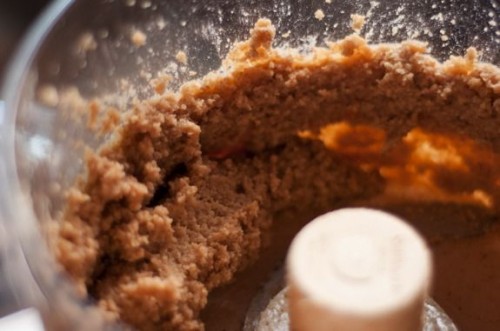
Tips for making nut butters
- Working with a food processor to make your nut butter will give a grainier product while an industrial strength blender will give a smoother, creamier product. In the recipe below, I give direction for making nut butters with a food processor. (If you happen to have a Vitamix (or other super-strength blender), go to my website and check out my recipe for gourmet nut butter made with that appliance.)
- When making nut butters, always choose fresh nuts and store them in the freezer until ready to use. Nuts are high in natural oils and can go rancid when stored at room temperature.
- I’ve made nut butter with roasted and unroasted nuts, both work well. Don’t use salted or seasoned nuts, though. With plain nuts you can control the amount of salt, sugar, or seasonings that go into your nut butter.
- Some nuts (macadamia, cashew, Brazil to name a few) are very high in natural oils and will result in a runnier product than other nuts. The nut butter will firm up in the refrigerator.
- If your nut butter looks too firm to you, you might add a bit of nut oil to get the desired consistency.
In praise of walnuts
I used walnuts for this recipe. Walnuts are a delicious source of Omega-3 essential fatty acids, which the body cannot manufacture. A quarter cup of walnuts provides 90% of the recommended daily allowance of these protective fats.
What’s the deal with Omega-3’s?
In case you’ve heard the buzz about Omega-3’s, but have no idea why you need them, they
- promote better cognitive function (better learning, higher test scores!)
- have anti-inflammatory benefits helpful for sufferers of asthma, rheumatoid arthritis, eczema and psoriasis
And walnuts are also great because…?
As well as Omega-3’s, walnuts contain ellagic acid that
- supports the immune system (beat the cold and flu season!)
- has anticancer properties
Walnuts are also very high in protein (way to grow!).
Good news for the moms at home eating nut butter
- walnuts are a good source of fiber
- they are high in beneficial polyunsaturated fats which lower harmful LDL cholesterol
- and are also a good source of folic acid, important for the mom trying to become a mommy again.
And for women of all ages, those healthy fats are important for the production of sex hormones (which aren’t just about sex – there are estrogen and progesterone receptors on cells throughout the body, including the brain!).
So, now that I’ve sold you on nut butters as health food, let’s get started!
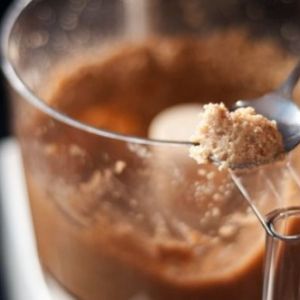
Cinnamon Nut Butter
Ingredients
- 3 cups walnuts
- 1/3 teaspoon ground cinnamon
- 1 pinch salt
- 1 pinch Stevia extract
Instructions
- Place the walnuts in the work bowl of a food processor fitted with the regular cutting blade. Process the nuts. After about 30 seconds it will begin to resemble graham cracker crumbs. After about 45 seconds stop the machine and scrape down the sides of the bowl
- Continue processing. After about 1-1/2 minutes, the ground nuts will come together into a ball. Taste the nut butter and add the seasonings, adjusting as you see fit. Some people like a sweeter or saltier product. Make it the way you like it.
- Pulse the nut butter, taste, and adjust the seasonings if needed, and continue to pulse until it reaches the desired consistency.
- Store your nut butter covered (a glass jar works for me) in the refrigerator.
Nutrition
After you’ve made your first batch of nut butter, have fun and play with nut combinations and flavors.
What’s your favorite nut and what flavoring would you pair with it?

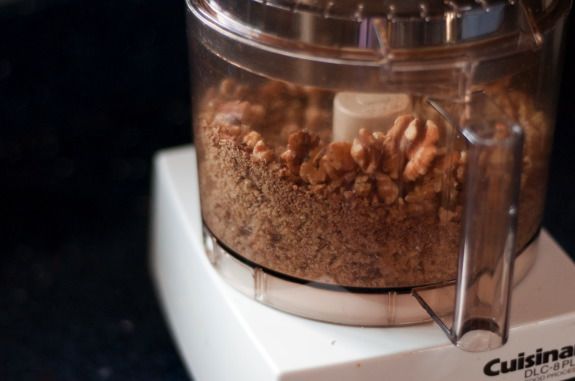
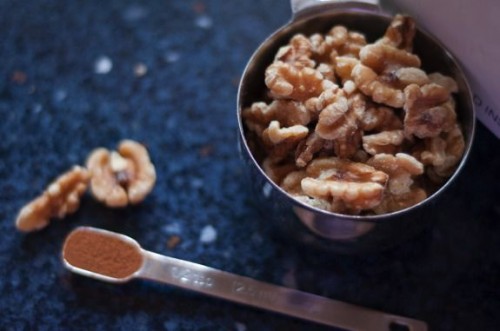
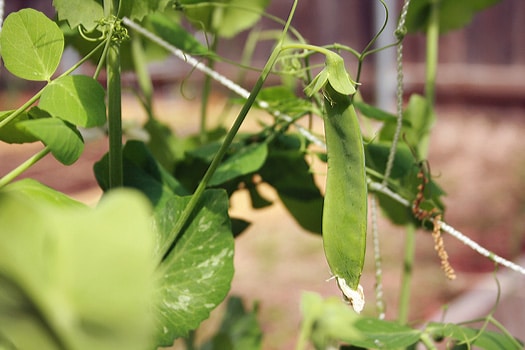
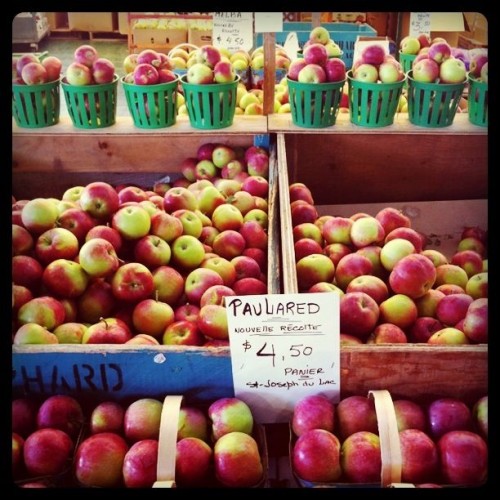

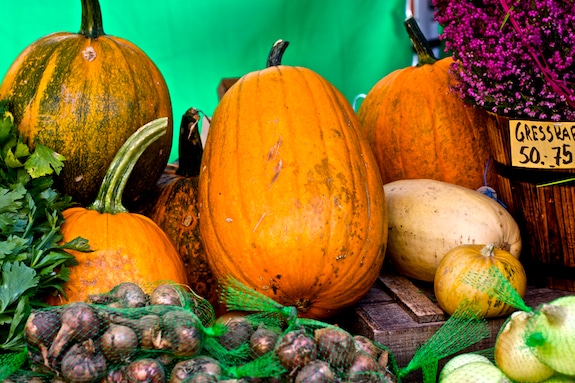
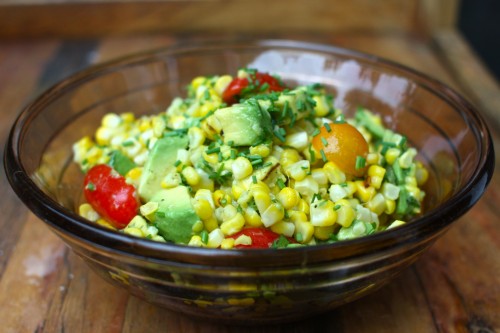
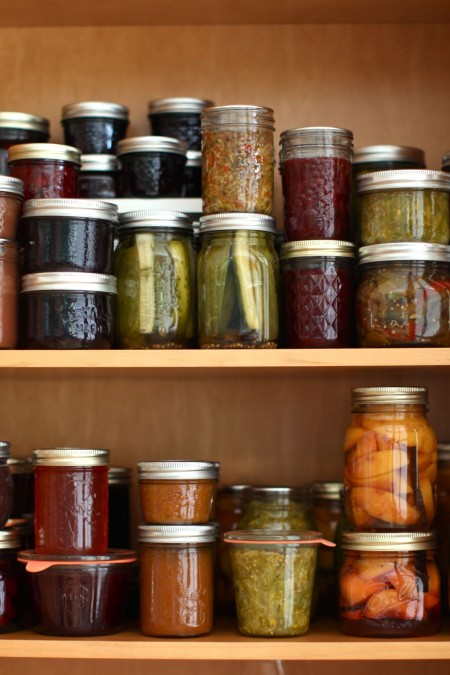
I love the creativity behind this and agree that nut butters as an alternative to peanut butter are a fun, healthy idea for lots of people. Unfortunately, they do not make a good substitution for peanut butter at school. Many schools ban both tree nuts and peanuts in the classroom if there is a child with an allergy, and provide a peanut free, nut free table for allergic kids to eat lunch. My oldest is severely peanut/tree nut allergic. All of her classmates who are peanut allergic also have tree nut allergies. Though this is certainly not true of every peanut allergic child, many families with either allergy choose to avoid both tree nuts and peanuts due to cross contamination when processing and packaging these items. The only safe nut butter options we’ve found are soy and sunflower butter, with sunflower seed butter being the better tasting option, in my family’s opinion.
Thanks for the info, Kim. It just goes to show that you shouldn’t trust a homeschooler about what goes on in schools. The sunflower butter sounds delicious. I’ll have to try that soon. As to the soy, I recommend you read the excellent article about soy over on Simple Organic.
My son’s school allows peanut butter -all nuts, actually. Still, this is a tempting way to mix things up. Thanks Lynn!
Our school doesn’t ban peanuts or nuts either. The kids with allergies ( like my daughter) are usually placed in the same classroom and nuts/peanuts are banned from that classroom for snacks or treats. Other students in the class can bring peanut butter or nuts in their lunches as long as they do not sit at the peanut/nut free table/
My kids’ daycare was strictly peanut-free when my daughter started there, but sometime in the last year, they added tree nuts to the list. I’m not sure cross-contaminated food is on their radar.
My children do not have food allergies. My son loves peanut butter, and I rather think my daughter used to, but she’s a big fan of jelly. “Audrey, want a peanut butter and jelly sandwich?” “No, just jell'”
We are one of the “lucky” ones…my son isn’t allergic to any tree nuts, just peanuts. We love almond butter and have tried the sunflower butter too. I actually like almond butter better than peanut butter.
Oh…and we’ve found several tree nuts that aren’t cross contaminated. Many of Costco’s nuts are safe as are Blue Diamond brand vanilla bean and cinnamon flavored almonds. He loves those! And Barney Butter is a great Almond butter that is made in an almond only facility.
Agreed, nut butters are banned in most schools that ban peanut butter. And unless you’re shelling your own nuts, many are processed in the same facilities as peanuts. Often on the same machines. So cross contamination is a big issue.
There are some non-contaminated nut butters out there (Blue Diamond Almond Butter), but that doesn’t help with a total nut ban. The best alternative is to use sunflower or golden pea butter (many soynut butters can be cross contaminated as well – always read the label).
Golden pea butter? Intriguing idea. How does it taste? Like peas?
Golden peabutter (see http://www.peabutter.ca/ ) actually tastes very much like peanut butter, just a bit lighter. My kids like it better than peanut butter actually! It’s made in Canada; in the US you can get it from http://www.peanutfreeplanet.com —some stores in the US may sell it, I don’t know which ones, though. Highly recommended! It’s made from a new variety of pea that turns brown .
Ohhh yeah! soooo healthy!!! BAH!!!! it has Mono-diglycerides and Hydrogenated Cottonseed Oil !!!!!!!
Healthy????? hummmmmmmmm >:(
WE LOVE THIS! We have been searching high and low for a good butter or spread recipe and this is it! Thank you so much for sharing this recipe. I am going to tweet this so everyone of the walnut lovers our there can see and try this.
http://www.peabutter.ca/
It actually tastes a bit like the filling for Pirate cookies, and can be used for no-nut butter cookies.
this sounds soo good… I am for sure going to give it a try! My daughter is a peanut butter lover and I can not get her to take anything else to school.. my be we can switch things up a little 🙂
oh and I had no clue that some schools ban peanut butter! but can see y they would have to!
again thanks! I love, Love reading your posts!
I also looked at you other recipe of the Heavenly Macashew Brazil Butter
do you think it would work to just use my food processer… I am blenderless.
thanks 🙂
My kids don’t like peanut butter. 🙁 Such a bummer. We homeschool and it could totally save me for an easy out on lunches.
Does anyone have a suggestion for a replacement butter I could make with this method that I could use in a granola bar recipe? I’d like something without a strong flavor that they might not notice. 🙂 They don’t really like any nuts. However, I really struggle finding granola bar recipes that hold together well without a “butter” type substance.
Any suggestions? Thanks. 🙂
This sounds wonderful and so easy to make! Anything w/ cinnamon and walnuts is always a winner!
My kiddo is severely allergic to all nuts, so we’ve experimented to find a yummy, creative replacement for peanut butter. We use raw pumpkin seeds and sunflower seeds, mixed with a little ground flax seed, some coconut oil and orange blossom honey. It’s sometimes a trick to get the consistency right (it tends to be REALLY thick) but the result is amazing. (And versatile) We use it for sandwiches, on crackers, and (for a real treat) even roll it into balls and dip it in chocolate.
I’d love your recipe. My mom loves nuts but can’t tolerate peanuts or tree nuts any more.
I love this idea! And the flavour combination is brilliant.
We also go to a school that allows no nuts of any kind on the premises, and just yesterday my son was asked not to bring an egg sandwich to school because a boy in his class is allergic to eggs. In any event, when we’re at home we love to smear our apples with peanut butter and I think this recipe would be great for that.
No eggs? Really? That seems a big harsh, I mean people are allergic to everything…what’s next? No bread?
My co-worker’s son was in a pre-school where a child had gluten and dairy allergies (sensitivities? not sure of the difference) as well as nuts, so all three were banned! Can you imagine trying to find a gluten/dairy/nut-free snack for a pre-schooler? They ate a lot of fruit that year!
I totally agree. Peanut butter is one of the most economical things to use to make lunches and for schools to ban it totally seems off to me. When that child grows up and gets a job is the boss going to ban peanuts from the office? there has to be a better way. As to the egg sandwich, I would have to have a talk with the school about that one. All they have to do is not sit anywhere near each other at lunchtime and like you said there are people who are allergic to lots of things. The next thing you know anything with gluten is going to be banned. Ugh, sometimes I wonder about our world.
What a great post – thanks so much for sharing this info!
Love this article. Luckily my girls school hasn’t banned peanut butter yet but I’m sure it may happen next year as so many kids are allergic these days. The peanut butter sandwich has saved me on many occassions already this year as a easy thing to pack in their lunch box.
I love this recipe and love the addition of cinnamon. Sounds delicious and with the added benefits of the omega 3 it sounds like a perfect substitution to peanut butter. Looking forward to giving this a try soon.
Yeehoo! I have desperately been needing to find a post like this one! Thank you, thank you! I have gone to eating Paleo/ primal for about 3 months now and love it! But, I’m getting a bit bored of just almond butter. I tried to make a different almond butter the other day and only succeeded in making almond flour. Back to the drawing board. But then, I found you! I am going to make that walnut butter post haste. I be doing a post on it here. http://cavewomancafe.wordpress.com/
OH I love nut butters! this one sounds delicious, I want to make it but I think I need to get some fresher walnuts first – mine are a few months old now! Cheers, Joe
Ohhhh that sounds sooo good! I tried once and failed miserably at nut butter. I think I’ll try again following your recipe!
I’m definitely going to try this walnut-cinnamon butter. It looks so yummy. I try to get at least a small handful of walnuts into my diet every day. In the winter I add them to my morning porridge, but walnut-cinnamon butter on toast sounds divinely delicious.
One of my favourite veggie pâté recipes has walnuts (and green beans) as its base. It’s a mock chopped liver from the Moosewood Cookbook.
It’s great in sandwiches made with sourdough bread and alfalfa or mustard sprouts.
I love how simple this butter is. I enjoy walnut and am a fanatic for cinnamon! Can’t wait to try this. Thanks!
As a vegetarian child in school, I often took brown bag (or my star wars tin box) for lunches, yes I was a geek and I still love star wars.
Now, I still make lot of nut butter to use in sandwiches, stew and curries too. Love how you shared it.
I am really concerned about the commercial brand peanut butters that we get here in Kuching – almost all of them contain hydrogenated (not partially hydrogenated; fully hydrogenated) vegetable oils. I’d much rather eat fresh nut butters, but nuts are prohibitively expensive here, and we don’t have a food processor. What to do?
This sounds really delicious and I will be trying it as soon as I get some input from you 😛 I have a huge bag of walnuts in the freezer, but I’d like to know do you recommend using it straight from the freezer, soaking them in water for a while, or just letting them come to room temperature before I throw them in the processor?
Walnuts should not be used as a source of omega-3 fatty acids. The average American’s diet contains a 20:1 omega-6:omega-3 ratio. The ratio should only be 3:1 to 1:1. Walnuts contain a 4:1 ratio of omega-6’s to omega-3’s. While 4:1 is much better than the average 20:1, it’s still high. Nuts and seeds in general are a very high source of omega-6’s. Best sources for omega-3’s are cod liver oil, grass fed meats and dairy, and leafy green vegetables.
Don’t forget cold-water fatty fish like salmon! Yum!
What is stevia extract?
I have been doing a lot of dietary research (including reading/following the Perfect Health Diet). Such a surprise to discover that peanuts aren’t nuts, but legumes.
My homemade nut butter is usually a blend of toasted almonds, raw cashews, and Brazil nuts (which are actually seeds). With a little coconut oil. My kids and I thank you for the idea of adding cinnamon. Yummo!
I do have a Vitamix and use it to make walnut butter and almond butter. Haven’t yet branched out to flavors like cinnamon or other varieties of nuts, but perhaps it’s time!
Any chance you can stop addressing your readers as “the moms at home”?
it feels alienating to single people and to those of us without kids
your blog is wonderful in content BUT your audience for what you do…is MUCH LARGER than only MOMS
a minority of human beings are mothers raising a family right now.
It is fine to aim your blog at Moms and families (families…a more inclusive term) but you really don’t have to talk to JUST moms
it just struck me in the article above which I had been enjoying….
Thanks for this recipe – I am going to try it. I am giving homemade cranberry jam to friends for Christmas, and thought a nut butter might be nice to give along with it.
Thanks! Your instructions are the best … well-written, simple and very easy to follow and saved me time. Who could have done butter?
Does this spread well like peanut butter or is it more grainy than a melty butter would be? (I am thinking about making this to spread on soft banana bread.) Thanks
Seems a little much to ban PB in schools. Seems like it would be better to have intense education on peanut allergies and accepting that everyone has different tolerances and issues.
I have been a major PB addict for half a century! Over time I have been eliminating the toxic and moving toward healthier. Decided to make my own and through researching I found out how dangerous PB is for anyone. The aflatoxins cause cancer in anyone allergic or not! The aflatoxins also are the cause of peanut allergies. Roasting and drying does not solve the problem. The solution I found was to use Virginia peanuts or Jungle peanuts that do not have the aflatoxins. All good except that there is a shortage of organic Virginia peanuts and they can not be found anywhere. It is important to have organic as peanuts are so heavily sprayed and absorb it so heavily. The other option Jungle peanuts is SO expensive. Also they are becoming extinct and hard to find. I added up the cost of well over $20 a pound making it w/ Jungle peanuts. Almond and cashew butters are great, but they just do not fill the spot that PB does.
Came here now, as I am trying to find other options to PB that taste close, but are safer and do not cost a fortune. Looking to try recipes for sunbutter and I heard adding coconut brings it closer to PB flavor and I hear butter made from brown peas also is close. Some things just do not work with out PB, so what I make needs to be close. I hear the pea butter and sunbutter are close enough I will give it a shot.
I do find making some nut butters in the food processor can be tough and I have found the trick is to let them mix long enough and then a little longer after that. If it’s not creamy then it has not mixed long enough. It’s a must to make my own, as controlling what goes in it is important.
I LOVE jungle peanuts and eat them by the handfuls! Since the nut is alive, it may be planted…maybe it’s possible to grow your own?
Have you tried making this with only walnuts, no salt or anything else?
Thanks for sharing !!!Your information is really Helpful.